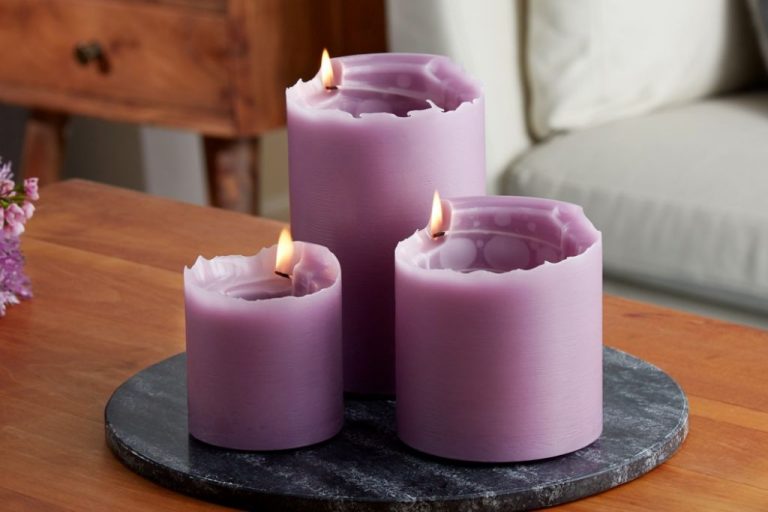Should I Refrigerate Candles?
Candles are beloved decorative items in homes around the world, emitting a soft, cozy glow and filling the air with sweet fragrance. With proper care, a high-quality candle can burn evenly for dozens of hours without issue. But what happens when you aren’t actively burning your candles? Should they be stored at cool temperatures in the refrigerator?
This question has sparked considerable debate among candle enthusiasts. Some swear by refrigerated storage as the best way to prolong shelf life. Others argue it can do more harm than good. We’ll explore the facts around refrigerating candles, including the effects of cold and condensation on wax and fragrance. You’ll learn the ideal storage conditions for candles and signs that refrigeration may be warranted. While not always necessary, refrigeration can be an effective preservation technique when done properly. Let’s shed some light on this candle care controversy!
Reasons People Refrigerate Candles
Some people choose to store their candles in the refrigerator for a variety of reasons. The most common reason is to extend the shelf life of the candle. Candles are made from wax, fragrance oils, and dye. The ingredients that give candles their signature scent can lose their potency over time when stored at room temperature. Refrigerating candles slows down the evaporation of the fragrance from the wax, helping candles retain their scent longer. The cold temperature of the refrigerator can also slow down the rate at which the color pigments in the wax fade. Therefore, refrigeration is sometimes used as a technique to prolong the usable life of a candle by preserving its fragrance and appearance.
Effect of Cold Temperatures on Candles
One of the main effects of cold temperatures on candles is that it changes the wax’s structure. Candle wax is largely composed of hydrocarbons that are solid at room temperature. When exposed to colder temperatures like those inside a refrigerator, the hydrocarbons cool and contract. This causes the wax molecules to pack together more tightly, increasing the density and firmness of the wax.
The tighter molecular structure also makes the wax more brittle and prone to cracking or crumbling when stressed. Sudden temperature changes from taking a cold candle out of the refrigerator can also create internal stresses that cause the hardened wax to fracture or pull away from the container walls.
Additionally, the contraction of the wax can lead to depressions, dents, or divots forming on the surface as it shrinks unevenly. This can create an unsightly appearance. The effect is especially noticeable on pillar candles or candles with ornate decorative surfaces.
In summary, the colder temperatures in a refrigerator harden and densify the wax structure of candles. This leads to a more brittle, fractured wax that is at higher risk of cracking, crumbling, and developing surface deformities.
Effect of Condensation on Candles
Placing candles in the refrigerator can lead to condensation forming on the candle’s surface and pooling at the base. This moisture can cause a variety of issues:
Water damage to wicks/labels – Candle wicks are typically made of cotton or paper fibers. When exposed to moisture, the wicks can become saturated and lose their ability to properly draw up wax to fuel the flame. This makes it difficult or impossible to light the candle. Moisture can also damage paper labels, causing ink to run or the label to peel off.
Condensation should be avoided to prevent water damage to wicks and labels. Allow candles to come to room temperature before lightning to prevent issues.
Recommended Storage for Candles
The best way to store candles is in a cool, dry place away from direct light and heat sources. Ideal storage temperatures are between 50°F to 80°F. Temperatures outside of this range can negatively impact candles in various ways.
Storing candles in a climate-controlled area in your home is a good option. A closet, cabinet, or basement works well. You can also keep candles in a cool garage or storage area if the temperature doesn’t get too hot or cold.
Make sure to keep candles away from sunlight, heating vents, stoves, and other heat sources. Fluctuating temperatures can cause the wax to sweat and lose fragrance. Direct light over time can also fade candle colors.
Additionally, store candles in a dry spot with low humidity. Moisture in the air can develop into beads of condensation on candle surfaces when the temperature drops. This moisture can sink into wicks and cause other damage.
By following basic storage guidelines, you can help extend the shelf life of candles and maintain quality from season to season.
Signs Your Candles Need Refrigeration
One of the clearest indications that your candles could benefit from refrigerated storage is if they start melting in hot environments. Candles are made from wax, oils, and other ingredients that have melting points. If the temperature rises above that melting point, the candle will begin to get softer and lose its structure.
Signs that your candle is melting from heat exposure include:
- The candle wax appears shiny, wet, or liquid.
- The candle shape is becoming distorted or losing its form.
- Wax is dripping or leaking from the bottom of the candle.
- The wick is falling over or leaning to one side.
- The candle surface looks warped, with ridges and valleys forming.
If you notice any of these signs, it means the environment is too hot for your candles. The wax cannot maintain its solid state and is reverting back to a molten liquid. Refrigerating the candles will prolong their life by keeping the wax cool, hard, and in its original sculpted shape.
Proper Procedure for Refrigerating
If you determine refrigeration is the best storage method for your candles, follow these guidelines for proper procedure:
First, allow the candles to come to room temperature if they were previously stored in a cold environment. Abrupt temperature changes can cause cracking or frosting. Allow the candles to sit out for several hours to gradually warm up before refrigerating.
Next, wrap each candle individually in plastic wrap or place in a resealable plastic bag. This protects the candle surface from collecting condensation that may deposit moisture into the wax. Make sure the plastic wrap fits snugly against the candle.
Then, arrange the wrapped candles in a single layer on a shelf or drawer of the refrigerator. Avoid stacking candles or overfilling the space. Air circulation is important to allow gradual cooling. Refrigerators have cold spots and temperature fluctuations, so monitor candle storage conditions periodically.
Finally, only refrigerate candles for the recommended duration according to manufacturer guidelines. Most candles should not be refrigerated for more than 2 weeks. Allow the candles to come back to room temperature gradually before burning to prevent issues like cracking from thermal shock.
Drawbacks of Refrigerated Storage
While refrigerating candles may seem like a good idea, there are some potential drawbacks to consider:
Wax shrinkage – Exposing candles to cold temperatures can cause the wax to shrink and pull away from the container. This leaves unsightly gaps along the sides and can even cause the wax to crack or split. Wax shrinkage also leads to a looser fit in candle holders, increasing the risk of the candle falling over.
To avoid wax shrinkage, it’s best to store candles in a cool, dry area at normal room temperature. Refrigeration should be limited to short periods if absolutely necessary.
Special Considerations
When it comes to refrigerating candles, certain decorative or vintage candles require extra care and consideration:
Vintage/Decorative Candles
Older candles or decorative candles that are meant more for display rather than burning may have additional factors to keep in mind before refrigerating:
- Fragile Components – Candles with ornate glass holders or delicate wax figurines could be damaged by temperature changes or condensation. Handle with care.
- Unknown Materials – The wax formula or wick material in antique/vintage candles may react poorly to cold. Prioritize stability.
- Aesthetics – Condensation or temperature fluctuations can cause decorative candles to lose their visual appeal by altering shape, finish, or color.
- Rarity – One-of-a-kind antique candles could become irreparably damaged. Consider specialty storage.
For rare or decorative candles, refrigeration could do more harm than good. Seek professional guidance to find the ideal storage conditions.
Conclusion
In summary, refrigerating candles is generally not recommended. The cold temperature can cause candles to lose their scent and become brittle over time. Condensation can also damage candle wax. The ideal storage conditions for candles are in a cool, dry place away from direct light and heat. Refrigeration should only be considered for certain types of candles in hot climates, and even then proper precautions need to be taken. When stored properly, most candles can last up to two years before needing to be replaced. Ultimately, refer to the storage recommendations on your specific candle’s label. With the right care, you can enjoy your favorite candles for many hours.



